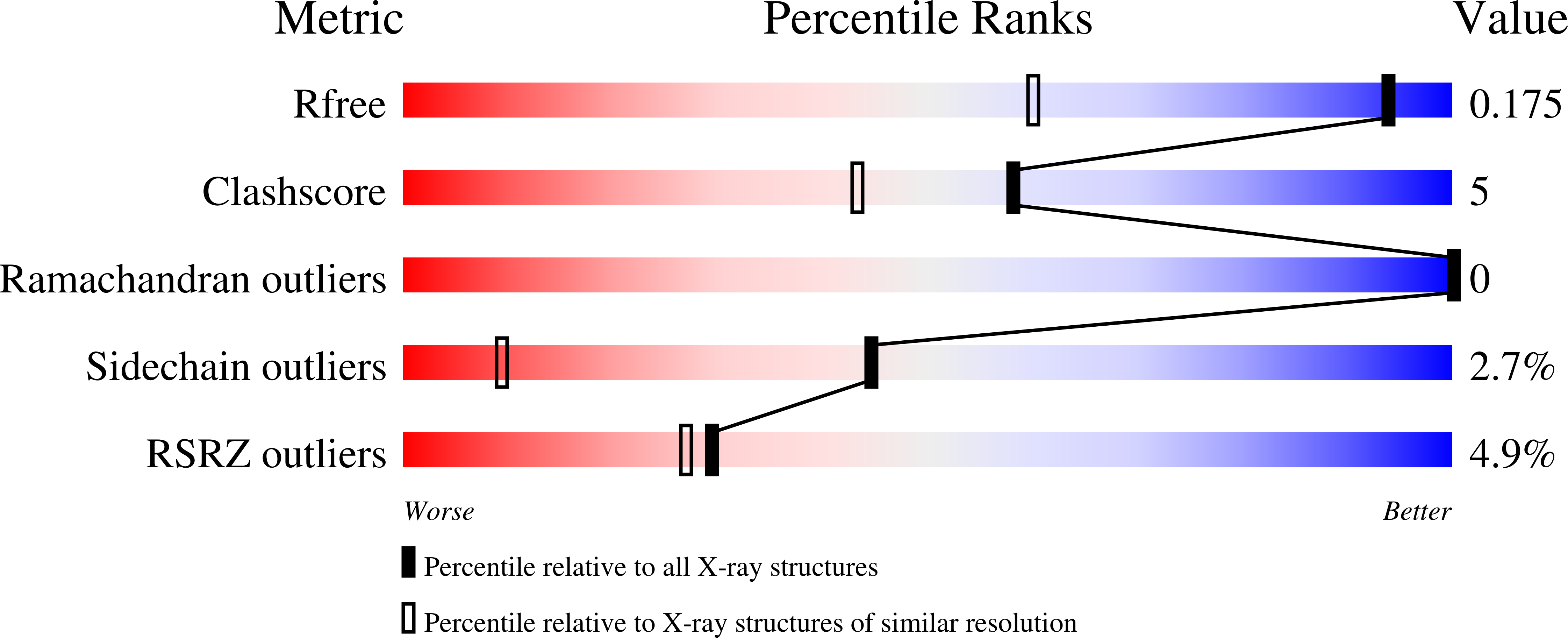A protein engineered to bind uranyl selectively and with femtomolar affinity.
Zhou, L., Bosscher, M., Zhang, C., Ozcubukcu, S., Zhang, L., Zhang, W., Li, C.J., Liu, J., Jensen, M.P., Lai, L., He, C.(2014) Nat Chem 6: 236-241
- PubMed: 24557139
- DOI: https://doi.org/10.1038/nchem.1856
- Primary Citation of Related Structures:
4FZO, 4FZP - PubMed Abstract:
Uranyl (UO2(2+)), the predominant aerobic form of uranium, is present in the ocean at a concentration of ~3.2 parts per 10(9) (13.7 nM); however, the successful enrichment of uranyl from this vast resource has been limited by the high concentrations of metal ions of similar size and charge, which makes it difficult to design a binding motif that is selective for uranyl. Here we report the design and rational development of a uranyl-binding protein using a computational screening process in the initial search for potential uranyl-binding sites. The engineered protein is thermally stable and offers very high affinity and selectivity for uranyl with a Kd of 7.4 femtomolar (fM) and >10,000-fold selectivity over other metal ions. We also demonstrated that the uranyl-binding protein can repeatedly sequester 30-60% of the uranyl in synthetic sea water. The chemical strategy employed here may be applied to engineer other selective metal-binding proteins for biotechnology and remediation applications.
Organizational Affiliation:
1] Department of Chemistry and Institute for Biophysical Dynamics, The University of Chicago, 929 East 57th Street, Chicago, Illinois 60637, USA [2].














